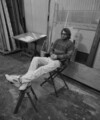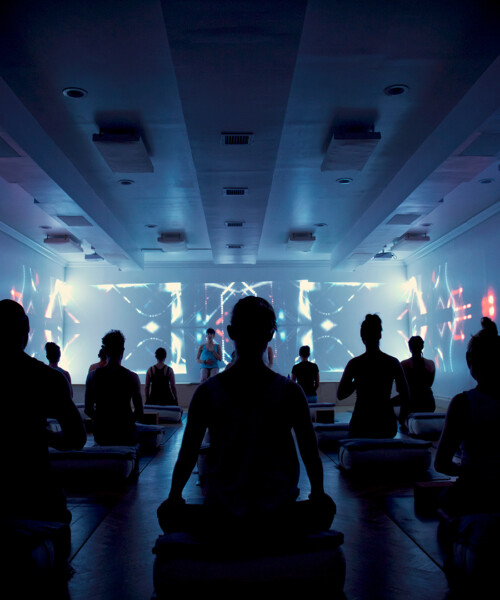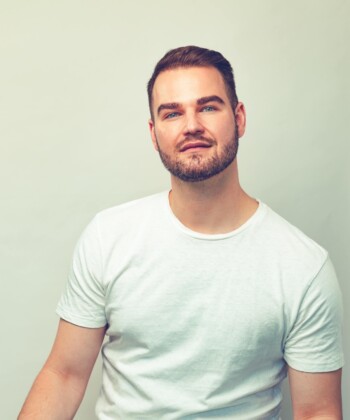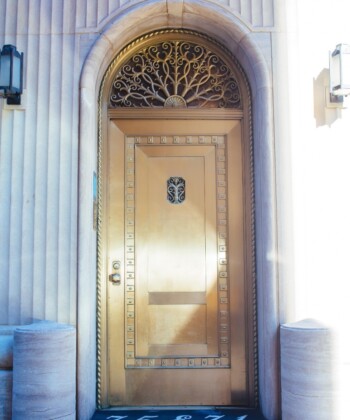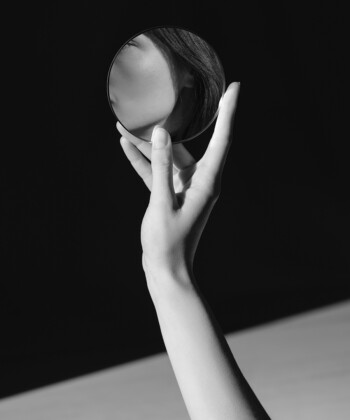My heart beats loudly as I push through the door of WOOM Center. Immediately, a beautiful, calming scent sweeps over me, though I can’t quite put my finger on what the fragrance is. Various plants adorn the counters, walls, tabletops and windowsills, and women who I assume must be regulars at this café-meets-meditation-center-meets-yoga-studio sit around the space, reading or discussing their days in hushed tones. The girl at the front desk greets me kindly, and I settle into one of the many inviting chairs, admiring the calm scene around me.
The feeling of relaxation slowly coming over me is exactly the reaction WOOM owners and co-founders Elian Zach-Shemesh and her husband David Zach-Shemesh dreamt of when creating this urban temple. The center’s whimsical, earthy café is a zen, cozy space for friends to grab a snack, self-meditate or to work in peace. There’s also a single, windowless meditation room, completely closed off from the noisy outside world. Today, I’m here to experience an immersive sonic journey called the WOOM Sound Experience led by Elian and David.
The Talk
In the meditation room, mats are arranged in a circle, each with a bolster, blankets and blindfolds to create a sort of bed. “Creating a circle is the best way to have a closed circuit of energy for the night,” says Elian. “It helps people see each other as fellow travelers, it gives us access as we go around so we don’t have to stumble, and it’s very ceremonial as well.”
We begin with an introduction of what is to come, followed by a reading from the Kabbalah. As David and Elian explain that we’ll be expressing ourselves through sound, I can tell this is not the place to hide behind my introverted personality. Fear and regret circulate through my mind, and I feel on edge about opening up in a room full of strangers. The fact that we’ll be wearing eye masks during the meditation settles my nerves a bit.
Later, when the experience is finished, I express my hesitations to Elian, curious about what she’ll say. “I would love for all of us to give ourselves permission to be more ourselves,” she tells me. “And not in the personality kind, but on a pure level to allow ourselves to explore our deepest fears because if we don’t explore them, they’ll remain fears; our past; our demons. And I think what we offer here is just a way of going about it.”

WOOM Sound Experience
Vocal Meditation
Collectively, the room loudens and softens as we follow the guidance of our teacher’s hums, and from there break free into our own realm of self expression through vocals. Meow. Shhh. Hishhh. Squawk. Ooohh. Aaah. I try to build off the energy of the surrounding bodies, but I’m wondering when it will all be over. Before I know it, the purrs and shrieks surrounding me turn into sobs. I can’t quite tell if they are tears of joy or happiness, and I wonder if I’m doing something wrong. My mind wanders—I’m wondering what I’ll eat for dinner while the people around me seem to be having a life-changing experience.
Breathwork
Next, we indulge in breathing inspired by Stanislav Grof’s Holotropic technique of powerful breaths, which combines stimulating and evocative music with accelerated breathing. The use of Holotropic breathing introduces individuals to a natural internal state of healing. As I try to keep up with the collective rise and fall of breaths around me, an intense sensation overtakes my body. My head spins and my hands begin to tingle. As I try to breathe faster, the tingling sensation spreads.
According to Elian, this breathing exercise “detaches us from our monkey mind, our thinking mind” to reach a more heightened state of awareness for meditation. “It really does open up a clear channel to receive the sound with less of the chatter,” she says. “It takes away some of the mental clutter and facilitates a clean slate for receiving the sound in a meaningful way.”
Sound
A variety of overtone-emitting instruments are played during this portion of the meditation, including Himalayan singing bowls, tuning forks, chimes, bells, gongs and more. “I love them all,” says Elian. “They’re all my children.” David and Elian’s extensive knowledge and understanding of the tones and vibrations of each instrument allows them to go into each class with the sound portion unplanned. And yet the ebb and flow of music progresses so beautifully, it seems rehearsed. “You understand what is going on in the room, the mood in the room, then you choose what instrument to use next,” says David. “We try to take the receivers on a journey and then bring them back to their physical body.”
The portability of micro instruments such as the Koshi Chime, tuning forks and bowls allows for a more intimate experience. David and Elian bring these instruments close to each individual’s head, one at a time. As I listen to the intense vibrations of the music, I’m fascinated by the colors and sound waves I see behind my blindfold. Finally, I feel like I’m experiencing a piece of the spiritual journey the other members of the class seem to be on.
Connecting
As the meditation comes to a conclusion, each person in the room slowly turns around and unmasks. We sit facing into one another, ready to unpack the spiritual roller coaster that our minds and bodies experienced in the dark room. The walls are now vibrant with colors and changing scenery emitted through projectors.
One by one, my classmates share what went on in their bodies and minds that caused them to break down in tears. It’s inspiring to hear what others have to say, but I remain quiet, feeling a bit disappointed in my lack of realizations and confused about how people could possibly have had such incredible spiritual experiences.
“We cannot be everybody’s bowl of hummus, that’s for sure,” says David. “We believe this work should be done everywhere, because we honestly believe that sound is the medicine of the future.”
More than the meditation itself, I’m inspired by the conversations sparked during this sharing session. I came here for an experience, not to “find myself” nor to release stress nor to face a specific problem in my life. My WOOM neighbor proudly admits that his tearful mid-session break down was a coping method to release all things bad. Another woman shares that meditation is the only thing which has helped her to leave her ex-boyfriend. These accounts make me realize just how blessed my life is, and that makes me feel invigorated. After this experience, I want to continue learning to improve myself, to love myself, to understand myself.
“We realized that we are all weirdos in here,”says Elian. “And aside from being weirdos, what really unifies the people that come into this space is kindness.”
Visit WOOM Center for more information about class offerings, schedules and prices or pop in mid-day for a Zen work spot and check out what David is cooking up in the cafe for the day.
Main image: Asi Ze’evi














